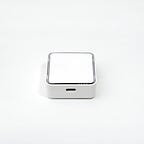10 Medical Words About The Respiratory System, Part 2
Think you know them all?
We’re back with part two of 10 medical words about the respiratory system! These 10 words are crucial to our understanding of how our respiration works and how it relates to the air quality that we breathe, which is important.
- Eupnea
In our respiratory system, eupnea refers to normal, good, natural breathing. It’s also known as quiet breathing or resting respiratory rate. Think of it as the breathing you do when you sleep. During eupnea, our body and mind are in a state of relaxation.
- Dyspnea
Commonly known as shortness of breath, it is a breathing discomfort that causes chest tightness and air hunger (the feeling of not breathing enough oxygen). Dyspnea is common but can be dangerous if happens too frequently. 85% of cases happen due to asthma, pneumonia, lung disease, heart failure, panic attack, or anxiety. It is a common symptom in COVID-19 patients.
- Apnea
Apnea is also known as holding your breath. During an apnea, air does not enter or exit our lungs as there is no movement of the muscles of inhalation. Breathing in and then holding your breath is a common diagnosis to test if you have asthma or not. It is commonly used to calm ourselves (e.g. breathe in, hold, breathe out). It is also used to determine brain death and coma.
- Hypopnea
Hypopnea is characterized by shallow breathing or low respiratory rate. This is common with people who drinks a lot, is obese, and smoke. With moderate to severe hypopnea, people will find it hard to fully fall asleep at night and feel drowsy or weakened when they wake up. It is a common symptom with a sleeping disorder and may result in daytime sleepiness, sloppiness, and compromised quality of life. Hypopnea has been a cause of traffic accidents, low productivity, and emotional problems.
- Hypoxia
This is a condition in which our body or parts of our body lacks oxygen at a tissue level. This commonly happens to people who hike to very high altitudes (e.g. Mount Everest) where it causes altitude sickness. However, this can also happen to patients who have pneumonia, where their oxygen level in their blood can suddenly drop without any warning. COVID-19 patients with pneumonia who has shortness of breath are also at risk. Hypoxia can be prevented through regular exercise, breathing fresh air, and drinking water.
- Rhinorrhea
This is commonly known as the runny nose! People who have symptoms of allergies, e.g. pollen, common cold, etc… will have a running nose. It can also happen when crying, being in cold temperature, or cocaine abuse. Severe rhinorrhea can prevent breathing through the nose, causing mucus to build up in our cavity. In severe cases, it can cause nosebleeds and sore throat. Besides medications, a runny nose can be treated by drinking hot tea.
- Rhinitis
Rhinitis happens when rhinorrhea gets worst. It’s the irritation and inflammation of the mucous membrane inside the nose, which causes sneezing and more running nose. The inflammation is caused by bacteria, viruses, or irritants to allergens. Rhinitis varies in severity for people. Very sensitive people can get rashes and shortness of breath. Rhinitis can be prevented by practising good health habits, e.g. no alcohol, cigarette, exercise regularly, etc… and through medication and vaccination.
- Tonsilitis
Tonsilitis is a viral inflammation of the tonsils in our mouth. Common symptoms include sore throat, fever, trouble swallowing, fatigue, chills, bad breath, and large lymph nodes around the neck. Usually, this happens when viruses or bacteria enter the nose or mouth and is filtered by our tonsils. It is a very common inflammation that affects 40% of the world population and can be easily treated with paracetamol and ibuprofen.
- Influenza
Commonly known as “the flu”, is the most common infectious disease in our world. Symptoms can be mild to severe and they include high fever, runny nose, sore throat, muscle pain, vomiting, headache, coughing, and fatigue. The flu commonly begins two days after exposure to the virus, which spreads through the air from coughs or sneezes.
Very similar to COVID-19, the flu is also a common cause of death among old people. It spreads yearly (flu season) and causes 3 to 5 million cases a year and about 300,000 to 650,000 deaths. Frequent hand washing and wearing a mask reduce the risk of viral spread. Vaccinations are highly recommended.
- Chronic Obstructive Pulmonary Disease (COPD)
COPD is a type of lung disease that is characterized by long-term breathing problems and poor airflow, which can worsen over time. This means that eventually, everyday activities like walking or getting dressed become difficult. Main symptoms include shortness of breath and coughing with sputum. The most common cause of COPD is smoking and air pollution. It affects nearly 200 million people globally and causes more than 4 million deaths a year.
Most COPD cases can be reduced by stopping smoking and improving indoor and outdoor air quality. Improving ventilation and improving oxygen airflow in our environment will greatly reduce the risk factors and the chance of developing COPD later in life.
Curious on how to keep the air clean so to avoid all the respiratory complication? Use PiCO Home now, to keep yourself and your family safe!
PiCO Home is available now on Amazon.
To inquire more about Brilliant & Company, please do not hesitate to drop us a line:
- CEO / Ryan Yun / ryan.yun@brilcom.com
- Global Marketing Manager / Steve Tan / steve.tan@brilcom.com
